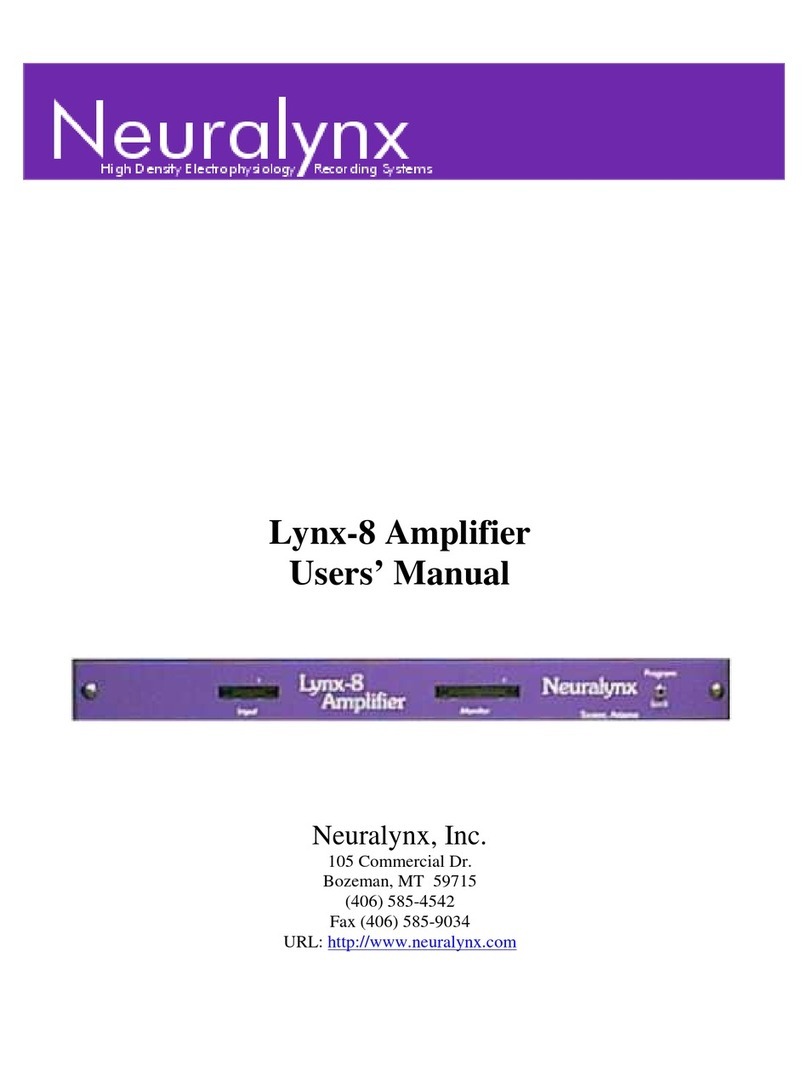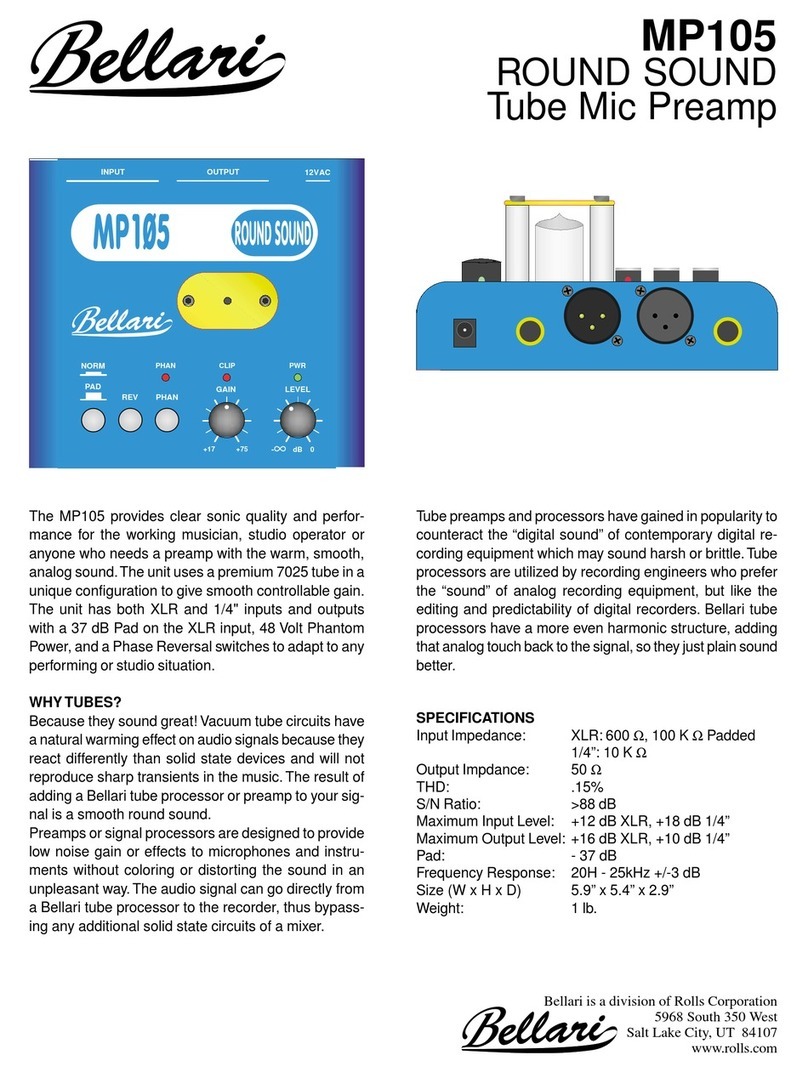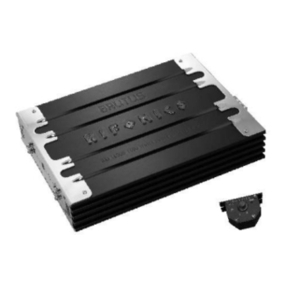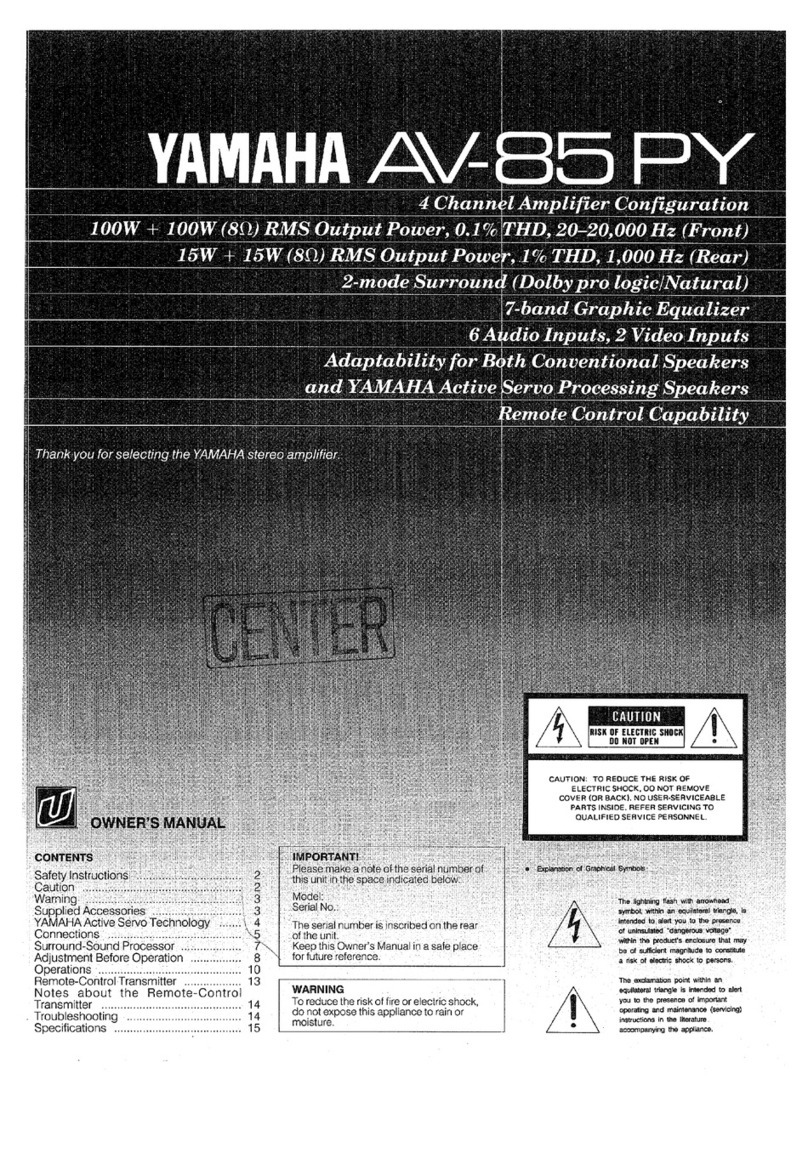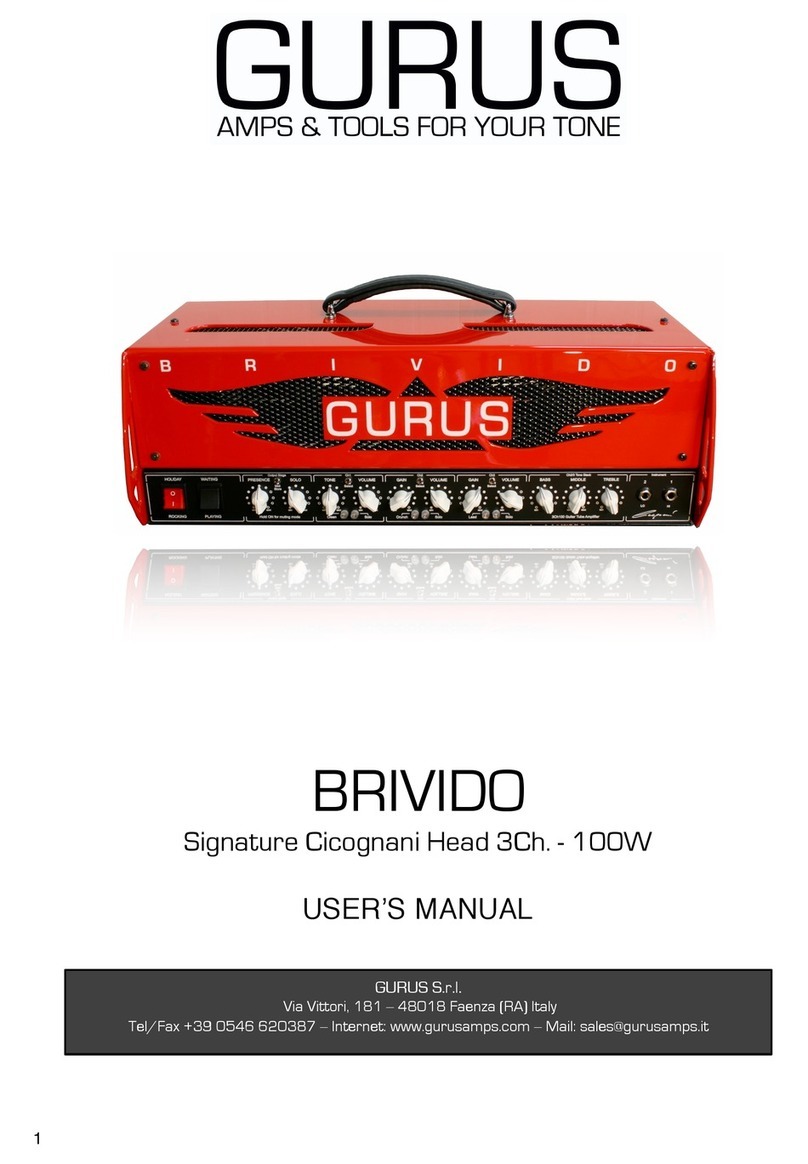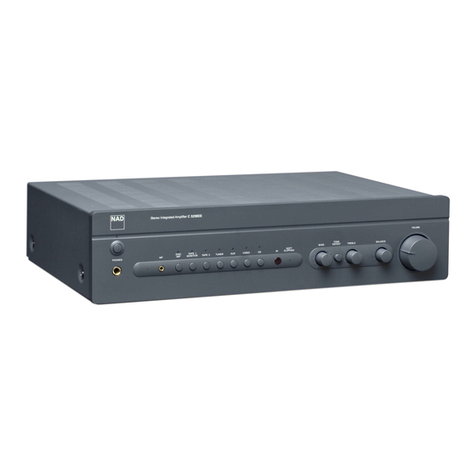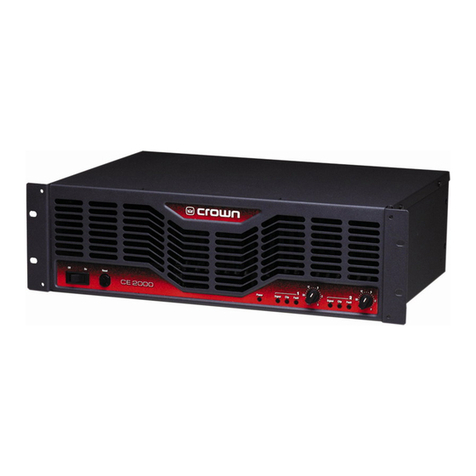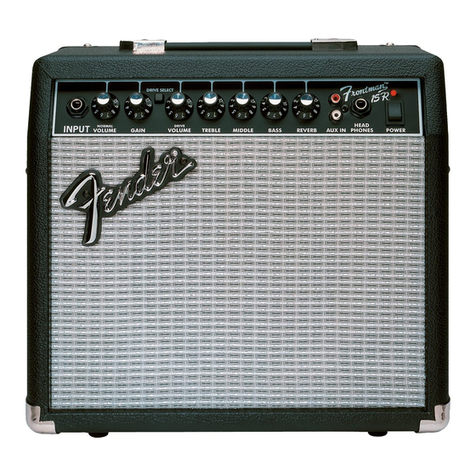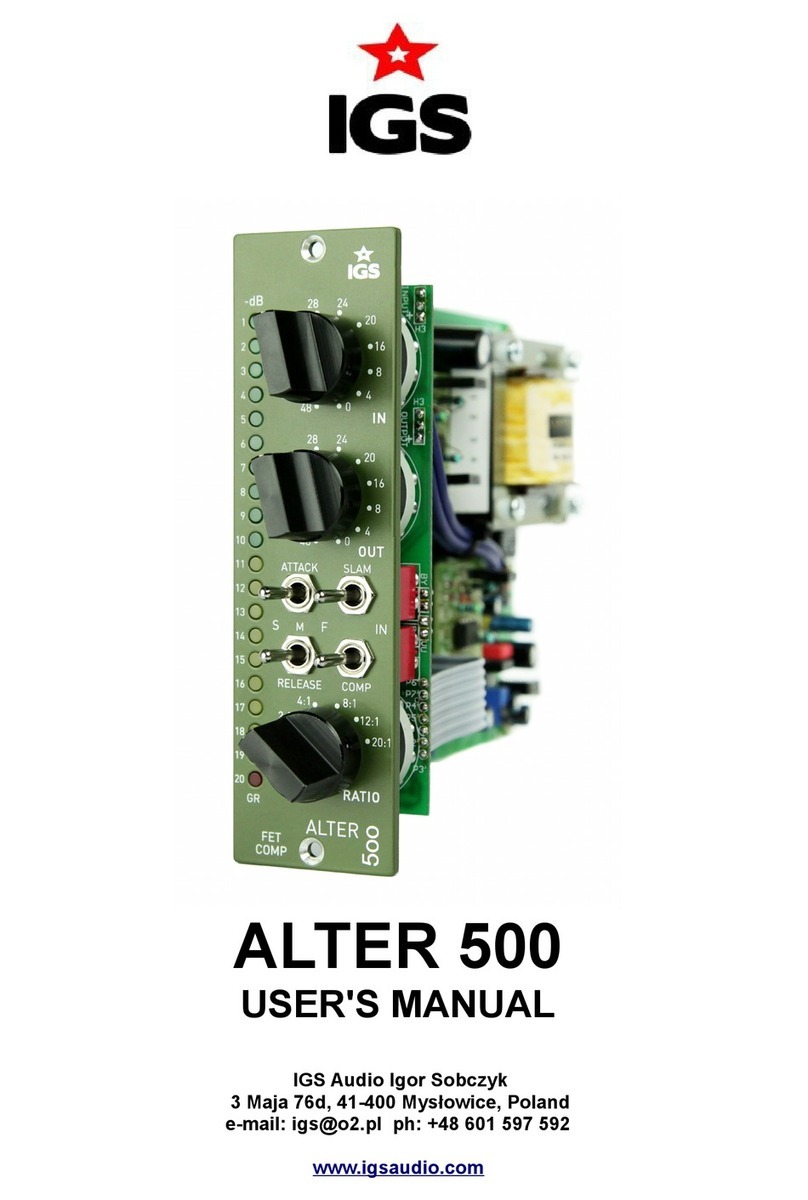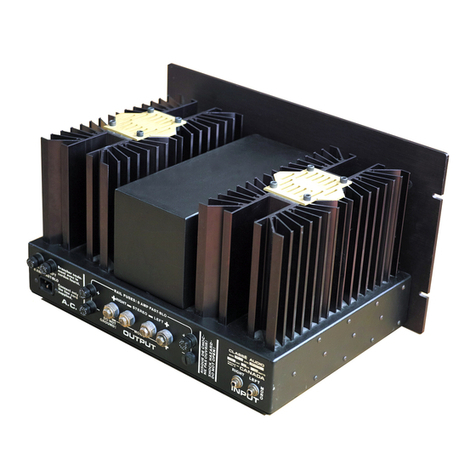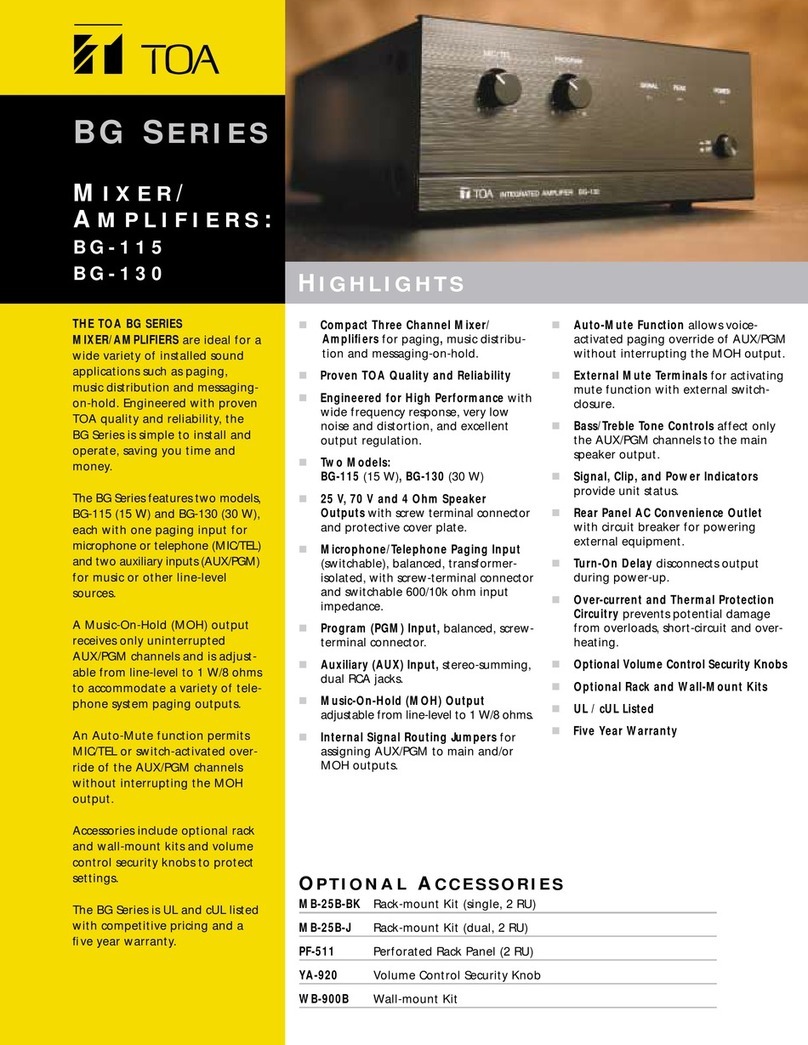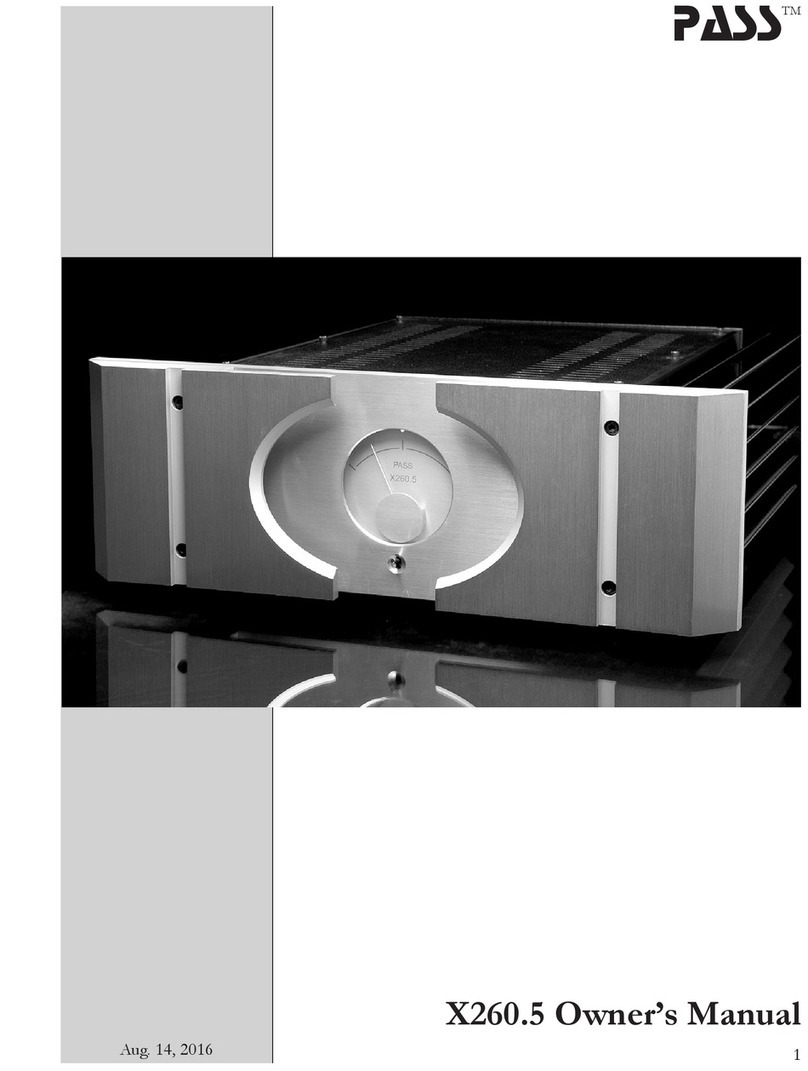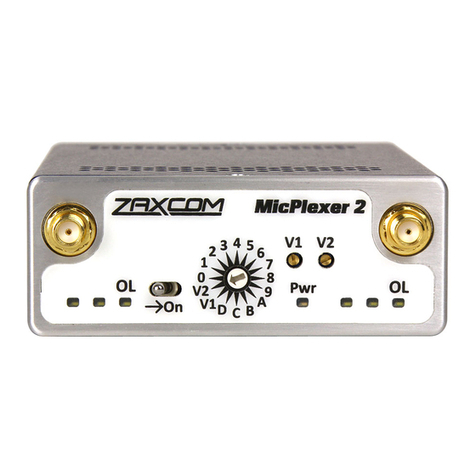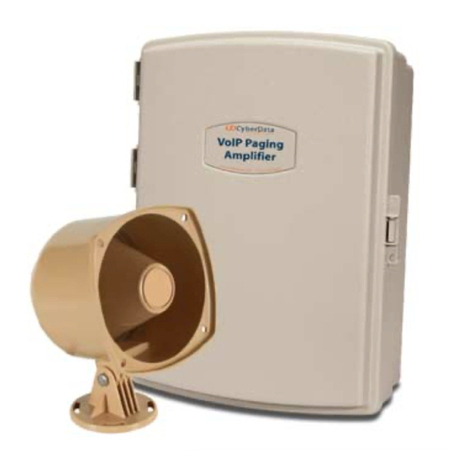Neuralynx HS-27 User manual

Neuralynx, Inc. HS-27 Manual
Rev 1.20 Last Revised: March 3, 2009
Page 2
Table of Contents
1HS-27 Overview ......................................................................................................... 3
2Glossary ...................................................................................................................... 4
3Power Supply Monitoring Circuitry ........................................................................... 5
4Tether Signal Connections.......................................................................................... 6
5Input Connector Pin out.............................................................................................. 7
6Power Supply Requirements....................................................................................... 8
7Mounting the Headstage to the Electrode Interface Board (EIB)............................... 9
8Practical Tips .............................................................................................................. 9
8.1 Antistatic Precautions........................................................................................... 9
8.2 Maintenance and Cleaning Information............................................................. 10
8.3 Shorting Plug Board Description and Use ......................................................... 10
List of Figures and Tables
Figure 4-1 : Pin Out of the uD37 Tether Connector........................................................... 6
Figure 5-1 MillMax Connector........................................................................................... 7
Figure 5-2 HS-27 Connector.............................................................................................. 8

Neuralynx, Inc. HS-27 Manual
Rev 1.20 Last Revised: March 3, 2009
Page 3
.
1 Headstage 27 Overview
The Neuralynx Headstage 27 (HS-27) Amplifier is the active electronic part of the
Electrode Interface Board /Headstage / Tether system. It provides 27 channels of Unity
Gain amplification (buffering). It also provides connections for the electrode inputs to the
EIB-27 and an output connector for a single cable 36-conductor tether.
The Headstage Amplifier size is approximately 35 mm high by 25 mm wide. One 37 pin
micro-D connector is used for tether connections. One connector on the bottom of the
board is used to connect the Headstage Amplifier to the Neuralynx Electrode Interface
Board.
Low noise, low power, low input bias current Op-amps have been used on this device
instead of the traditional “Source Follower FET circuit” used in the traditional headstage
amplifier design in order to: obtain exact unity gain which greatly improves Common
Mode Rejection Ratio (CMRR) performance for the entire recording system for artifact
and other common mode noise signal rejection; lower output impedance to reduce noise
susceptibility of the tether and other signal cabling; provide integral antistatic protection
on each input channel; insure low input bias current levels; and eliminate signal
distortion.
NOTE: Because an Op-amp is used for the unity gain buffer amplifiers, special care and
attention must be given to the power supply design and power application and removal
sequencing. The input protection circuitry will lower the input impedance if the input
voltage exceeds power supply voltage. This can occur by either raising the input voltage
signal above the power supply voltage or by the loss of power supply voltage. The HS-27
contains active power supply voltage monitoring circuitry which will not
apply op-amp power supply voltages until the power supply voltages exceed the
minimum normal operating voltage. The Neuralynx EEG/Reference Panel contains
power supplies, which properly sequence power supply voltage and monitor headstage
currents.

Neuralynx, Inc. HS-27 Manual
Rev 1.20 Last Revised: March 3, 2009
Page 4
2 Glossary
EIB –An Electrode Interface Board (EIB) is the interface between experiment electrodes
in a microdrive and the appropriate headstage

Neuralynx, Inc. HS-27 Manual
Rev 1.20 Last Revised: March 3, 2009
Page 5
3 Power Supply Monitoring Circuitry
The HS-27 PC board contains active circuitry, which monitors the total voltage of the
positive and negative power supplies. When the sum of the power supplies exceeds 8
volts power will be applied to the op-amp buffer amplifiers on the PC board and the Blue
LED on the topside of the board will be illuminated. If the voltage of the power supplies
drops below 8 volts power to the op-amps will be turned off and the blue LED will be
extinguished. The purpose of this circuitry is to protect the electrodes (and cells around
electrode tips) against loss of one of the power supplies, which causes the op-amps to
enter an “input protection” mode which causes an increased leakage current to flow from
the op-amp inputs and thus damaging tissue.

Neuralynx, Inc. HS-27 Manual
Rev 1.20 Last Revised: March 3, 2009
Page 6
4 Tether Signal Connections
One 37-pin micro-D type connector is used for the headstage-tether connection. Tether
cable consists of a shielded 36 conductor with overall shields. The individual wires in the
Tether are 44 gage, stranded conductors with a resistive measurement of approximately 3
ohms per meter. The Shield (pin 37) has a resistance measurement of about 1-ohm total
for a 5-meter cable.
Figure 4-1 : Pin Out of the uD37 Tether Connector
Note: The ground signals on pin 37 and 28 are connected together on the headstage
amplifier board.

Neuralynx, Inc. HS-27 Manual
Rev 1.20 Last Revised: March 3, 2009
Page 7
5 Input Connector Pin out
Figure 5-1 MillMax Connector
The input connector is a dual row 36-pin connector (2 X 18) MillMax .050” connector.
This connector mates with the connector on the EIB-27 series of Cactus Needle Electrode
Interface Boards. Odd number pins are on the topside of the connector and all even
numbered pins are on the bottom.

Neuralynx, Inc. HS-27 Manual
Rev 1.20 Last Revised: March 3, 2009
Page 8
Figure 5-2 HS-27 Connector
6 Power Supply Requirements
The Headstage Amp requires a dual supply, +5v and -5v for the buffer Op-amp
amplifiers. Current draw will be about 7 milliamps.

Neuralynx, Inc. HS-27 Manual
Rev 1.20 Last Revised: March 3, 2009
Page 9
7 Mounting the Headstage to the Electrode Interface
Board (EIB)
The EIB-27 is usually permanently attached to the animal. The Headstage Amplifier is
mounted to the EIB by placing the Headstage Amplifier on top of the EIB and carefully
pressing the connectors together. Each board has a female socket type connector to
reduce the possibility of damage to the board assemblies. An additional connector set,
“double male headers,” is used to make the connections between the two boards allowing
for easy replacement of a damaged header.
Note: The header pins should normally be left with the Headstage Amplifier and not
with the Electrode Interface Board. Headstage power should be turned off when
connecting and disconnecting to the animal. The Blue LED (white packaged surface
mount component) indicates the TOP side of the HS-27.
When connecting to the EIB-27 the BLUE LED side (the top side) of the HS -27 PC
board should be aligned with the “A1-12” inputs side of the EIB-27. If the HS-27 is
reversed when connecting to the EIB-27 all inputs will be connected to inputs and
grounds to grounds so there will not be any damage to the animal or tissue; but all signals
will be reversed and the reference and EE1/EE2 signals will be also swapped.
A spare double male header connector is included with the Headstage Amplifier. Extra
sets of the header connectors may be ordered from Neuralynx.
8 Practical Tips
ALWAYS WEAR AN ANTISTATIC WRIST STRAP WHEN HANDLING AN
ANIMAL OR WHEN HANDLING THE HEADSTAGE AMPLIFIER. These are
available at most electronics stores. It is very convenient to leave the headstage amplifier
physically connected to the in between experiment recording sessions. When this is done,
protect the headstage by placing it in the black antistatic shipping box. A piece of black
conductive foam in the bottom of the box will also help. Keep the double male header
connector attached to bottom side of the Headstage Amplifier and not to the top of the
Electrode Interface Board (attached to the animal). A small amount of heat glue or other
removable adhesive can be used to hold the double male header connectors to the bottom
side of the Headstage Amplifier. This will help the header connectors stay with the
Headstage Amplifier when the animal is disconnected. Remember that you will want to
replace the header connectors if one is damaged or bent.
8.1 Antistatic Precautions
As with all electronics, static discharges cause damage to semiconductor devices and
especially to impedance inputs. The Op-amp inputs are protected against a 2000-volt
discharge but care must still be used when handling and using the Headstage Amplifier.
Please observe the following guidelines:
1) Always wear a grounding wrist strap when handling an animal which is connected
for recording;

Neuralynx, Inc. HS-27 Manual
Rev 1.20 Last Revised: March 3, 2009
Page 10
2) Always wear a grounding wrist strap when handling the Headstage Amplifier; and
3) Store the headstage in the black antistatic protective box in which it was shipped.
Static discharge damage will usually result in lower amplifier input impedance and
noisier amplifier channel performance.
8.2 Maintenance and Cleaning Information
The Headstage Amplifier is coated with a Mil-Spec conformal coating and is therefore
NOT susceptible to contamination from dirt, animal food, fingerprints and wastes
The board may be cleaned with hot soapy water (Ivory dish soap is the best) followed by
a rinse with a 50% alcohol de-ionized water solution. Shake excess rinse solution off. The
board must be dried before using and may be placed in a dry incubator at 40 degrees C.
This is the process used for final cleaning after assembly at Neuralynx.
8.3 Shorting Plug Board Description and Use
Each Headstage is shipped with a “shorting plug” (a double male header connector with
all pins shorted with solder) to protect the Headstage Electrode Input signal connections
to Ground. This Shorting Plug provides additional static protection during shipping. It
should also be used between recording sessions or whenever the headstage/recording
system will not be used for an extended period of time.
Please note that the Headstage Op-amps contain “electronics industry standard” static
protection circuitry, which protects against damage when applied to the “standard human
body discharge” model, therefore it is safe under normal handling conditions during
animal/EIB connection. We recommend placing the shorting plugs as shipped in-between
recording sessions as an additional static protection measure.
Also note that Neuralynx highly recommends the use of a static wrist strap whenever
handling ANY exposed electronics or when handling ANY implanted animal because
cell damage will occur in the event of even slight static discharge to implanted electrode
connections.
If you have any questions regarding the use of the Shorting Plug or proper usage of Static
Protection including Static Wrist Straps please contact Neuralynx at 406-585-4542 or
Table of contents
Other Neuralynx Amplifier manuals

